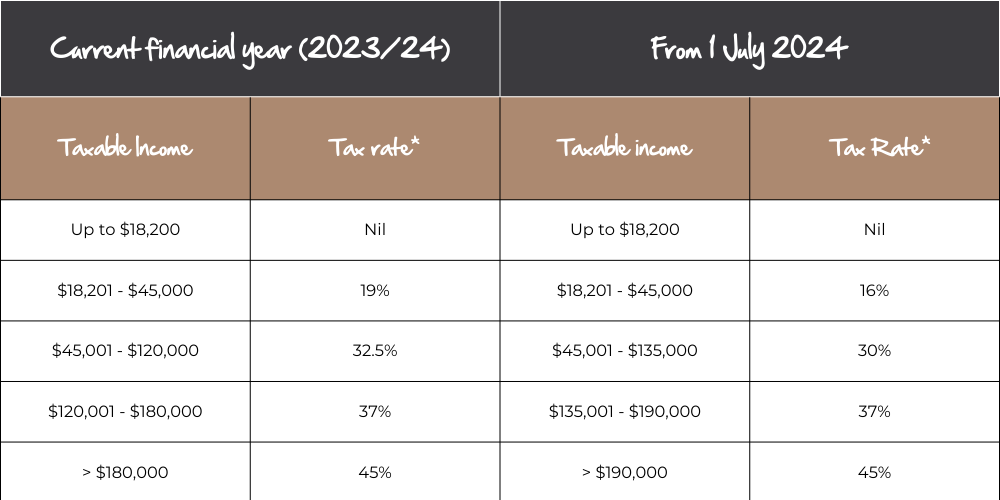These changes are proposals only and may or may not be made law. To understand more about how these proposals could apply to your circumstances, please reach out for a chat with our team.
Cost of Living
Energy bill relief
All Australian households will receive an energy rebate of $300 and eligible small businesses will receive $325 from 1 July. It’s not yet known exactly when rebates will be applied to accounts.
Student debt indexation changes
Higher Education Loan Program (HELP) loan holders will benefit from changes to indexation, with debts to be increased by the lower of inflation and wages growth. Currently, these debts are indexed to inflation annually on 1 June. The change will be backdated to 1 July 2023 and an ‘indexation credit’ may be provided to reduce outstanding loan balances. To estimate indexation credits, check out this HELP Indexation Credit Estimator. If a voluntary payment is made to reduce the HELP balance and any indexation, it’s important to leave enough time after the payment is made for it to be processed by the ATO. The ATO usually release payment cut-off dates and publish this on their website.
Freeze on cost of PBS medicines
The maximum Pharmaceutical Benefits Scheme (PBS) co‑payment of $7.70 will be frozen for pensioners and Commonwealth concession cardholders until 31 December 2029. For all other Medicare card holders, the co-payment of $31.60 is frozen until 1 January 2026. The co-payment is the amount that must be contributed towards the cost of PBS subsidised medicines.
Personal Taxation
Tax cuts for all taxpayers
From 1 July, 13.6 million taxpayers will pay less tax compared to the current financial year, when the re-worked Stage 3 tax cuts take effect. The tax savings depend on taxable income and can be estimated using this Tax cuts calculator. The table below outlines the new rates and thresholds from 1 July 2024, as well as the current financial year. The tax cuts aim to provide cost-of-living relief, but may also be used to reduce debt, invest or top-up super.

Business Taxation
Instant asset write-off extended
Small businesses with a turnover less than $10 million will be able to claim an immediate tax deduction for the full cost of eligible assets costing less than $20,000 for another 12 months until 30 June 2025. The $20,000 threshold applies to each eligible asset purchased. Also, the asset must be first used or installed ready for use between 1 July 2024 and 30 June 2025.
Superannuation
Super on Paid Parental Leave
Superannuation Guarantee contributions will be paid to all recipients of Government-funded Paid Parental Leave from 1 July 2025. Contributions will be paid at the same rate as employer contributions under the Superannuation Guarantee, which will be 12% from 1 July 2025.
Social Security and Aged Care
Deeming rates to stay frozen in 2024/25
The ‘deeming rates’ that are used to assess income from financial investments (such as bank accounts, shares, and managed funds) will remain unchanged until 30 June 2025. Instead of assessing actual investment and bank account earnings, the deeming rates are used to determine the income that certain financial investments earn for the purpose of calculating entitlements to certain payments and benefits. This may benefit Age Pensioners, other income support recipients and concession card holders.
Support for renters
On 20 September 2024, the maximum Commonwealth Rent Assistance payment will increase by 10%, in addition to the regular half-yearly indexation. Rent Assistance may be available for people who pay rent and receive certain payments from Services Australia.
More work flexibility for carers
From 20 March 2025, Carer Payment recipients will be able to work up to 100 hours at any time in a four week period without losing their payment. This is known as the ‘participation limit’ and it’s currently a maximum of 25 hours every week. Also, travel time, education and volunteering activities will no longer count towards the participation limit; only actual hours worked.
More home care packages
An additional 24,100 home care packages will be made available in 2024/25. These packages will provide ongoing care to help older Australians to stay in their homes for longer.
Source: www.budget.gov.au
Disclaimer: The information in this communication is factual in nature. It reflects our understanding of existing legislation, proposed legislation, rulings etc as at the date of issue, and may be subject to change. While it is believed the information is accurate and reliable, this is not guaranteed in any way. Examples are illustrative only and are subject to the assumptions and qualifications disclosed. Whilst care has been taken in preparing the content, no liability is accepted for any errors or omissions in this communication, and/or losses or liabilities arising from any reliance on this communication.




